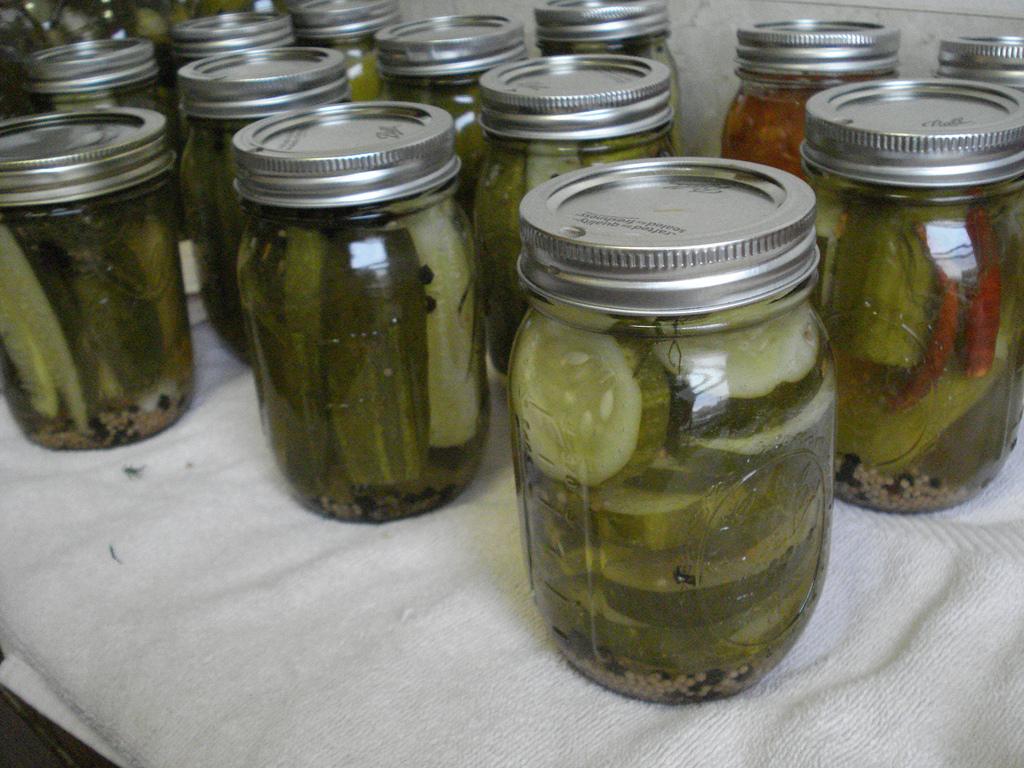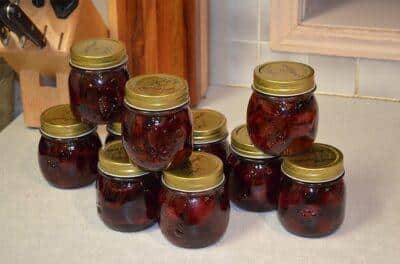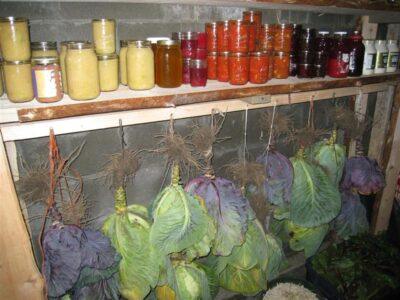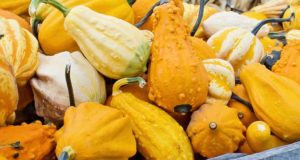I am frequently asked what is the best preservation method for various foods, and the answer is almost always the same: It depends.
The best bet is to be ready and able to do a combination of canning, freezing, dehydrating and root cellaring in order to maximize your efficiency and to end up with the best possible end result for the least effort and cost.
There are pros and cons to each type of food preservation, and which one you choose depends upon the food you are preserving, your own particular needs, your facilities and equipment, and the time you are willing and able to put into it.
The general rule of thumb in food preservation is to shoot for the shortest distance between two points. That is to say, choose the easiest and cheapest way to get the job done in a satisfactory manner. However, there are often additional factors which must be considered.
Let us first look at a few basic facts about each preservation method.
Canning
The upside of canned food is that it can be stored without the use of electricity, making it versatile for off-grid situations and worry-free for possible power outages. In addition, jars of food can be stored just about anywhere, making storage space less of an issue than with other options. The contents of canned foods are ready immediately without waiting for thawing or rehydrating. Also, many people prefer the taste and texture of canned foods, especially that of meats.
Just 30 Grams Of This Survival Superfood Provides More Nutrition Than An Entire Meal!
On the other hand, canning is generally the most labor-intensive method of food preservation. It also presents a certain level of risk that is less prevalent with other methods—although the likelihood of botulism in properly canned foods is miniscule. Many canned vegetables have a less desirable texture than their frozen counterparts, and some are even said to contain less nutrients when canned.
Freezing
The best part about freezing foods is minimal preparation. Another great plus is the increased flavor, texture and color of many foods.
The downside of freezing is that it costs more. Purchasing a freezer is a big investment, and running it continuously year-round adds up. Using a freezer to preserve food is a real challenge without a steady reliable source of electricity. Freezer space can be a problem, too. It takes up floor space in your home, and when it’s full, it’s full. Unlike other methods, the space is finite—16 cubic feet of food is not going to fit into 15 cubic feet of freezer.
Dehydrating
Not all foods can be dried safely and effectively, but those that can are able to be stored easily, using minimal space and no power, for a long period of time. Taste and texture can be an issue with dried foods, which somewhat restricts their usage. The cost of dehydrating equipment covers a wide range, from a simple homemade screen which is adequate in some climates to high-end electric models that do offer a certain appeal. There is a learning curve to dehydrating, as well, with it being arguably the most subjective of methods—unlike canning instructions that give specific processing times and freezing directions with blanch times. Dehydrating the same food can range from four to 12 hours.
Root cellaring
Root cellaring is easy and no-fuss. One of the older preservation methods, it involves at its most rudimentary level simply finding a cool place to store a vegetable and placing it there. But like most skills, it requires a little judgement and experience to know what goes where, how long it can be expected to last, and what not to pair with it. It can be as inexpensive and no-frills as a shelf alongside the cellar stairs or under the guest room bed, or as elaborate as an intentional structure out of stone and mortar.
This Cool-To-The-Touch Lantern Provides 100,000 Hours Of Emergency Backup Lighting
A word about smoking: Although recognized as an excellent option for food preservation, it probably involves more skills and equipment than everyday gardeners may have access to in their backyards and kitchens and pantries. For that reason, I have chosen to omit it from this discussion. But if it is your preservation method of choice, thumbs up to you!
My personal food preservation plan looks something like this: I reserve freezer space for foods which do not generally can well—if at all—such as broccoli, cauliflower, cabbage, eggplant, green peppers, pureed squash and most berries. If there is space beyond that, I add in foods which I prefer frozen, such as green beans.
If I have an abundance of beans—which I almost always do—I will can some. I like to can a few batches of blueberries to eat with yogurt, in addition to many pounds I freeze for use in baking. I always can my jams and pickles because I prefer the texture and cannot afford the freezer space.
I dry some fruits and like to make fruit leather. I also dehydrate vegetables when they are so abundant that I still have some left over after other methods, for use in soups and casseroles.
My root cellaring depends upon the weather. If it gets cold early in fall without too much of an Indian summer, so that the temperature in my house cellar drops and stays down, it is a prime opportunity for storing a bounty of food. I set apples in screened crates on the stone steps of my exterior bulkhead, where it gets very cold and stays damp, and keeps my apples separate from other foods. I place carrots and rutabagas and leeks in bins of sand in the main part of the cellar, and stash winter squashes in the closet in my utility room.
Make ‘Off-The-Grid’ Super Foods Just Like Grandma Made!
If I have time, I prepare some convenience foods—those which I am glad to reach for when I need something instant, such as canned potatoes, canned stew and canned pork-and-beans.
Your personal preservation plan might look different than mine. To sort it out, ask yourself the following questions:
- Do I realistically have time to can it?
- Can I afford the purchase price for a freezer, do I have room to store it, and do I have an adequate source of reliable electricity?
- Will I be satisfied with the end product of dehydrating foods?
- Do I have, or can I create, a place to store root crops as-is or in sand?
- Do I enjoy the taste and texture of my chosen method?
Certain foods ought not be canned, due to either quality or safety reasons. Brassicas, eggplants, summer squash, pureed vegetables and untested recipes are among these.
Other foods are able to be canned but often yield a disappointing result. Strawberries lose flavor and texture. Greens such as spinach and Swiss chard are a lot of work.
Conversely, tomatoes are generally better canned than frozen, but cherry types can be popped whole into freezer bags for use in soups and casseroles, and leftover batches that did not seal in the canner freeze fine, too.
Some foods have many options. Potatoes are great root cellared, canned, frozen or dehydrated. Most cuts of beef are, too, as well as many other meats and vegetables.
Sometimes, you can even use more than one method on the same food. For example, I hang my onions from cellar rafters, inside the legs of pantyhose with knots tied between them to keep them from touching, and they store well that way for months. But when they start to get soft—or when it gets cold enough for me to fire up my cellar stove—I peel them and freeze them in bags of slices or chunks. This two-phase method minimizes my processing efforts to only that which is absolutely necessary and still allows me to use onions at my convenience throughout the year.
There are many factors to consider when preserving food. Cost, space, effort and end result are all important considerations to be balanced. As long as you follow safety guidelines, there are plenty of options that can be tailored to a food preservation plan that works just right for you.
What advice would you add? Share it in the section below:
Discover The Secret To Saving Thousands At The Grocery Store. Read More Here.
 Off The Grid News Better Ideas For Off The Grid Living
Off The Grid News Better Ideas For Off The Grid Living







